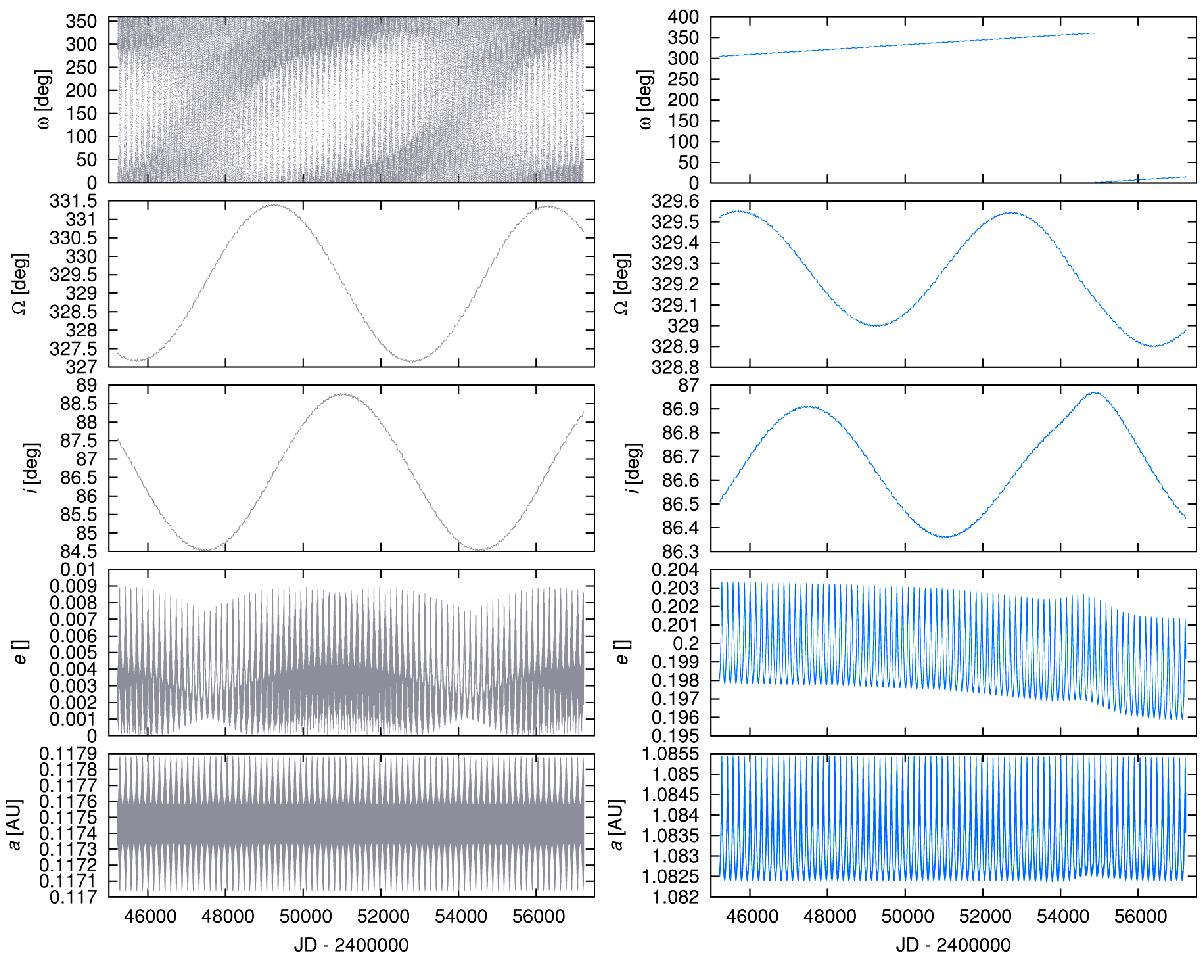Fig. 11

Time evolution of the osculating orbital elements over a time span − 11 000 to + 1000 days from the epoch T0 = 2 456 224.724705, covered by observations of ξ Tau. Left: the semi-major axis a1, eccentricity e1, inclination i1, longitude of ascending node Ω1, and the argument of pericentre ω1 (poorly defined because e1 → 0) of the inner, eclipsing binary orbit (components Aa and Ab). Right: the same parameters a2,e2,i2,Ω2,ω2 for orbit 2 (i.e. components (Aa+Ab) and B). All these plots correspond to the simulation with χ2 = 2578, presented in Fig. 9. Variations in the inclination i1 and argument of pericentre ω2 are of major interest, since they result in observable effects. On the other hand, the distant orbit 3 (not shown here) exhibits only minor variations of its elements. The bump in the osculation elements of orbit 2 at JD ≈ 2 455 500 is related to the passage of component C through its pericentre.
Current usage metrics show cumulative count of Article Views (full-text article views including HTML views, PDF and ePub downloads, according to the available data) and Abstracts Views on Vision4Press platform.
Data correspond to usage on the plateform after 2015. The current usage metrics is available 48-96 hours after online publication and is updated daily on week days.
Initial download of the metrics may take a while.




